We return to this series of entries on historical annotations of the film The King with the themes that we announced at the end of the first article dedicated to the subject.
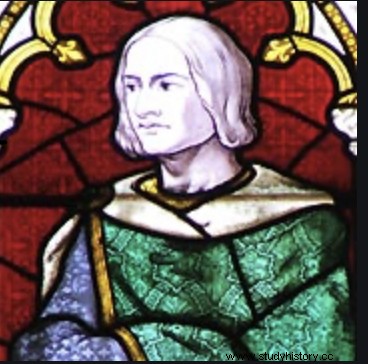
– The execution of the Earl of Cambridge and Lord Grey :in the movie, Henry V learns that the Earl of Cambridge and Lord Gray had been visited by an emissary from the King of France shortly after the latter sent an assassin to kill him. Enrique considers this action a crime of high treason and both nobles are executed, despite the fact that Cambridge was a relative of the king and one of his best friends.
The analysis of this episode of the film must begin with the identification of the Earl of Cambridge executed by order of Henry V. This character was called Richard of Conisburgh and was the son of the Duke of York Edmund of Langley, cousin of King Henry IV. For the Spanish reader, the circumstance that her mother was a Castilian princess, Isabella, daughter of Pedro I and María de Padilla, may also be of interest (in the link you can learn in detail the history of this interesting woman).
Ricardo was not the eldest son of his father, an honor that corresponded to his brother Eduardo of him. That is why he did not hold the title of Duke of York (inherited by Edward) but that of Earl of Cambridge, which had been granted to him by Henry V in 1414. Conisburgh had married Anne Mortimer, a member of the powerful Mortimer family, already cited in the first entry. The Mortimers were descendants of Edward III's second son (Lionel of Antwerp), while Henry IV and Henry V (of the House of Lancaster) were descendants of Edward III's third son (John of Ghent). Exhausted the successor line of the first son of Eduardo III, the Mortimer could wield a better right to the throne than the Lancastrians. This situation can be better understood in this family tree.
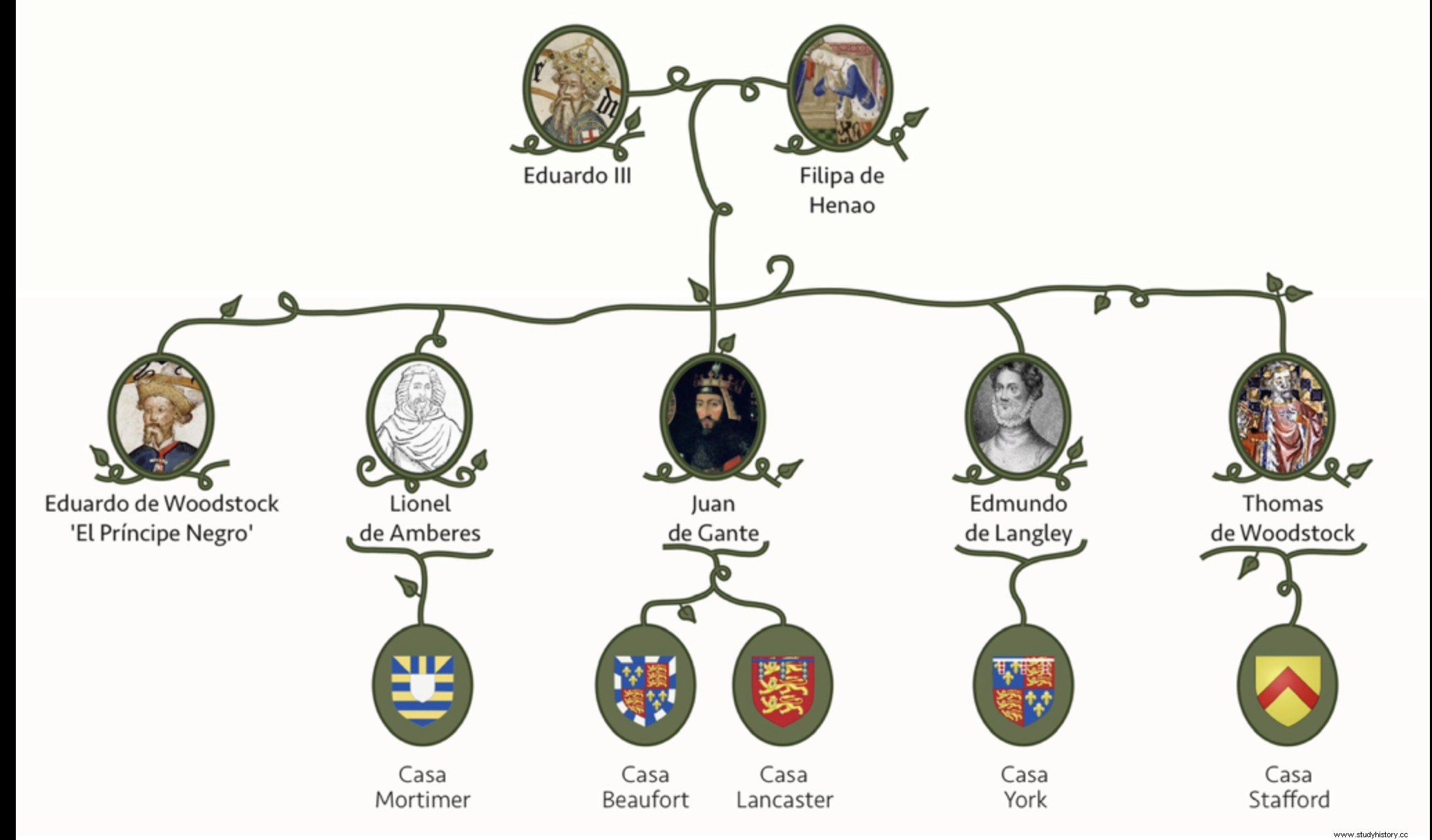
In 1415 Henry uncovered a plot against him, which sought to place Edmund Mortimer on the throne in his place. The problem was that none of the conspirators bothered in advance to obtain the consent of the man they intended to put on the throne. When Edmund was aware of the conspiracy, he lacked time to go to Enrique V revealing the plot and making it clear that he had nothing to do with it. The conspirators, discovered, were arrested and executed. Among them were Richard of Conisburgh and Sir Thomas Grey. His execution was due to this plot and not to alleged contacts with the King of France.
As a consequence of the betrayal of the Earl of Cambridge, his brother Edward, Duke of York, felt obliged to lead the most dangerous charge of the English at the Battle of Agincourt to prove his loyalty to Henry V and was one of the few English nobles to lose his life in that confrontation. He died without issue.
As for Edmund Mortimer, he remained a faithful servant of the king until his childless death in Ireland in 1425.
The reader may remember a scene from the film in which the Earl of Cambridge is seen in a library with a child. Presumably that child was his son Ricardo. When Conisburgh was executed for treason he was not dispossessed of his title, it passed to his son. When Edward, Duke of York, died childless at Agincourt, his title passed to this child also, as his brother's son. And when Edmund Mortimer died childless in 1425, his estates and titles (such as Earl of March in the Welsh Marches) also passed to Conisburgh's son, through his mother Anne Mortimer (now deceased). In time, this boy named Richard, Duke of York, Earl of Cambridge and Earl of March, heir to the lines of descent from the second and fourth sons of Edward III, would adopt the name Richard Plantagenet and claim the throne of England that he held. Henry V's son, Henry VI. That would be the beginning of the war of the Roses... but that's another story.
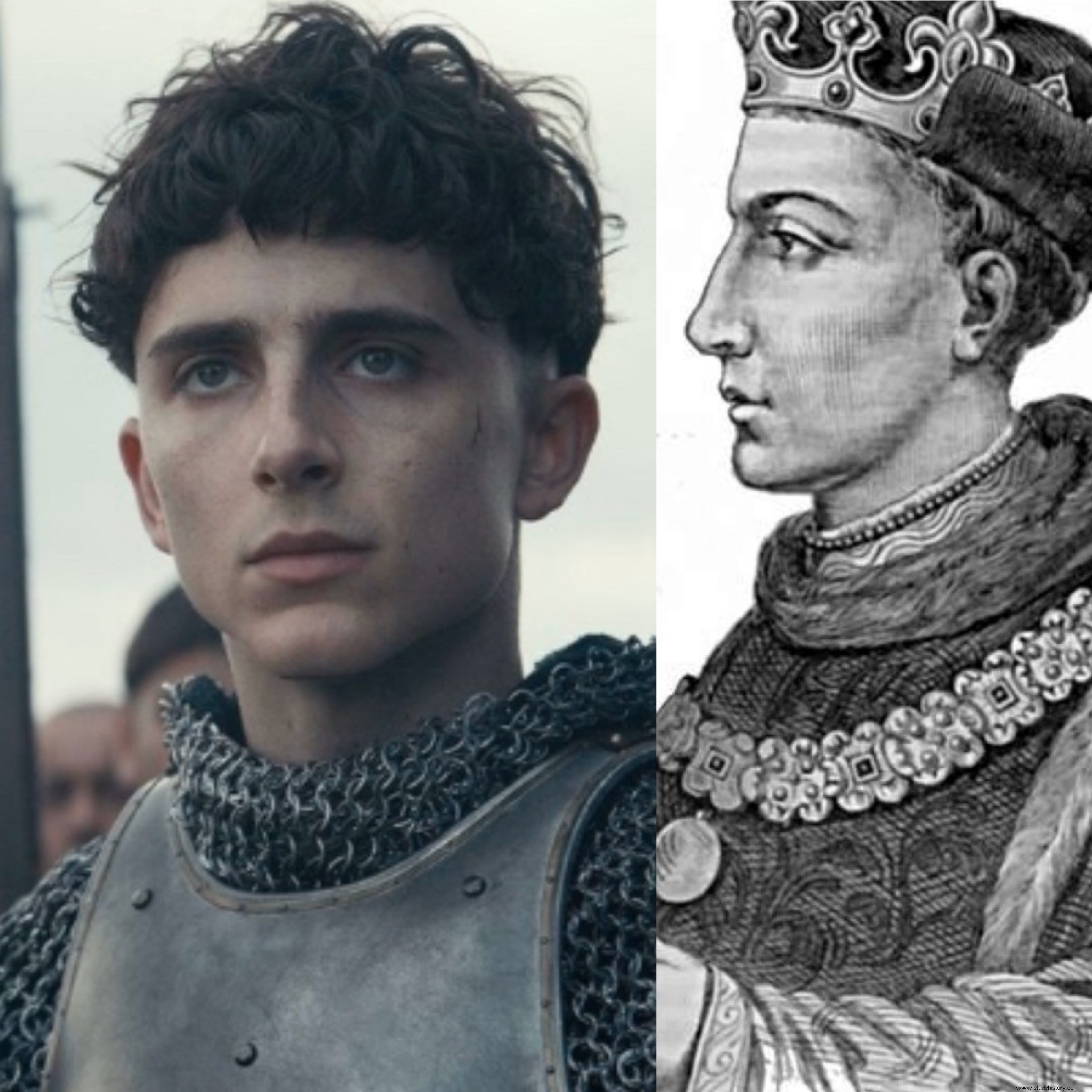 – The conflict with France . In the film, a pacifist Henry V (on two occasions he tries to avoid the loss of life in battle by offering a single combat to the leader of the opposing army) suffers continuous provocations from France (from the sending of an assassin to the referral of a ball with an insulting message by the dolphin). When a lisping archbishop tries to explain to him the dynastic claims of English kings to the French throne, he cuts him off without letting him finish his rambling explanation. Finally, fed up with the French provocations, he decides to face the enemy and travels to the continent.
– The conflict with France . In the film, a pacifist Henry V (on two occasions he tries to avoid the loss of life in battle by offering a single combat to the leader of the opposing army) suffers continuous provocations from France (from the sending of an assassin to the referral of a ball with an insulting message by the dolphin). When a lisping archbishop tries to explain to him the dynastic claims of English kings to the French throne, he cuts him off without letting him finish his rambling explanation. Finally, fed up with the French provocations, he decides to face the enemy and travels to the continent.
Henry V was not a pacifist. With twelve years he already participated in a campaign in Ireland and with sixteen he had his first experience in battle. Nor was he unaware of the dynastic reasons why the kings of England claimed the throne of France since Edward III gave rise to what was later called the Hundred Years' War in 1337 (see the link for more details on the reasons why the king of England claimed its right to the French crown).
Henry was perfectly aware of the evolution of the conflict with France and knew that Richard II had signed a truce with the French king that ended in May 1415. Henry was determined to resume his family pretensions to the throne of France initiated by his great-grandfather Edward III. He sent messengers to Charles VI of France claiming his right to be recognized as heir to the French Crown or, at least, that the historic family possessions of the Plantagenets recognized to the English kings in the Treaty of Bretigny (1360) be returned to him in the southern and western France, reclaiming the title of Duke of Normandy. He also requested the hand of the king's daughter, Catherine of Valois, who should come accompanied by a very generous nuptial dowry.
Aware that he would not get anything he claimed without some show of force, Henry V solicited heavy loans from the kingdom's bishops and merchants, but in December 1414 Parliament urged him to reach an amicable settlement with the French king. This possibility was removed when, in March 1415, the Dauphin (heir to the French Crown) sent a message to Henry V in which, in addition to making fun of his youth, he told him that he could hardly aspire to the French Crown when not even he was the rightful king of England. An episode recreated in the film, although, as we say, the reason why the heir to the French throne attacked him was for the usurpation of the throne for which his father had obtained the crown. Henry V then decided to attack France.
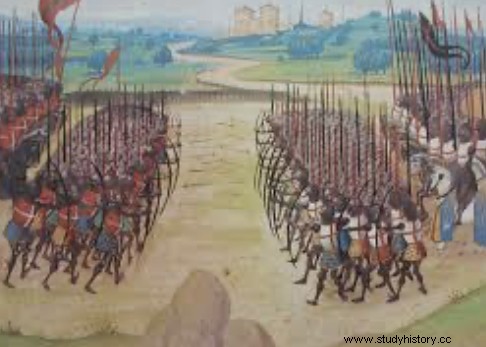
– The Battle of Agincourt : In the movie Henry V lands in France along with his army and besieges a castle which he subjects to a constant launch of projectiles until the occupants of it surrender to him. He then continues the advance with his force until he meets the Dauphin's French army. He refuses a single combat with Enrique to decide the contest and both prepare for the confrontation. The English are outnumbered, but their captain, John Falstaff, devises a combat strategy. A small force led by himself will act as a decoy to lure the French into a muddy area so that, once there, the English attack them first with their archers and then with the rest of the ground forces. The strategy works and the English defeat the French. At the request of his officers, Henry agrees to have the French prisoners executed so that they cannot join a possible French counterattack.
Henry V left Southampton and set foot in France on August 14, 1415. His first objective was to seize the historic Duchy of Normandy, lost in its day by John Landless, and he began by laying siege to Harfleur, but it took him more than a month to take the city, while the pestilence of the nearby marshes took its toll on his army, which was decimated. Henry had to change his plan to launch the invasion of Normandy, he sent the sick and wounded home and headed for Calais.
In principle it was a trip that should take about eight days. But the French had destroyed all the bridges and fords to cross the mighty Somme river, so the English had to take a long detour that involved traveling twice the distance initially planned, which would also take the same amount of time. Despite having received some reinforcements, the English army was reduced from around ten thousand men who initially formed it to just under seven thousand soldiers, weak, hungry, sick and exhausted by the long marches to which they were subjected to reach Calais before being overtaken by the army the French had sent in search of them.
But it was useless. On October 19, the last of the English managed to cross the Somme. The French army was already across the river, standing in his way to Calais. At his command was the Duke of Orleans, the King's nephew, since it had been decided that neither the King nor the Dauphin would be present to avoid the possibility of their being captured by the English (as had happened with King John II after the battle of Poitiers in 1356).
Henry V realized that it was not going to be possible for him to reach Calais and he prepared to present resistance in the place from which he could best take advantage of the orography to present battle. This place was called Agincourt and there they met on October 25, 1415, the exhausted, sick and hungry English army of seven thousand men with a rested and well fed French army of more than twenty thousand soldiers, the cream of the aristocracy, French cavalry and infantry. The English archers destroyed the French army again, definitely earning the reputation of being the most hated enemy of the French. The importance of archers in the English victory is downplayed in the film.
Henry V had to order his soldiers not to undertake the usual task of taking prisoners and then asking for a ransom, fearing that this would distract some of his men from the battle and might lead to a counter-attack by the prisoners. Contrary to what is indicated in the film, the initiative for this measure came from the king. In fact, his officers initially refused, because this measure of killing an unarmed enemy who had surrendered was against the most elementary rules of cavalry, in addition to entailing a heavy economic loss, due to the high ransom demanded by the freedom of a captive knight. Henry transferred the order to the archers from him and the prisoners were executed.
After a long and intense battle, the English prevailed, suffering less than a thousand casualties. On the French side more than twelve thousand men died, but these losses would not only prove lethal in the following years due to their number, but also due to their quality, since among the deceased there were three dukes, five counts, more than ninety barons. and about two thousand knights.
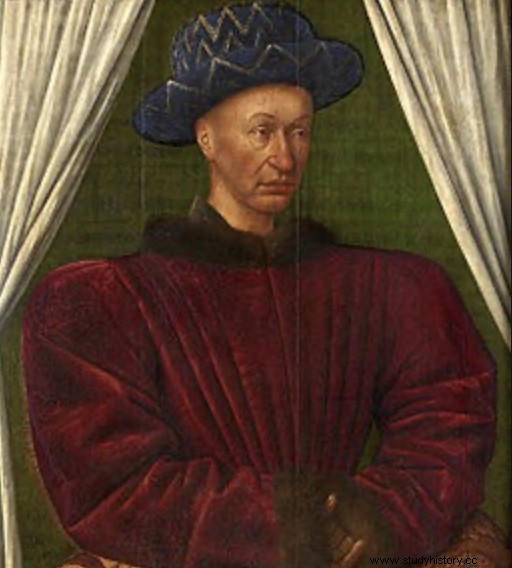
– Carlos, the Dauphin of France . In the film, the son of the King of France is constantly provoking Henry V whom he repeatedly urges to surrender and humiliate again and again. When the English and French armies meet, he refuses to face Henry V in single combat and only at the end, seeing that the battle does not take the planned course, goes to the field and challenges the English king, who then rejects his claim and leaves let his men be the ones to finish off a tottering French prince who does nothing but slip in the quagmire that the battlefield has become.
The Dauphin Charles was the son of Charles VI, King of France, known as the Beloved, but also as the Fool, as he suffered from intermittent attacks of a disease that made him lose his mind for weeks or sometimes months. This provoked a muted struggle for power among the French nobility, with two sides, the Armagnacs and the Burgundians. The dolphin Carlos led the first of these two sides.
After the battle of Agincourt, in which the dauphin was not killed, but was not even present, the differences between the two sides worsened. In 1417 there was a new English invasion of France. Negotiations were opened between Henry V and the French King Charles VI, who was accompanied by his son, the Dauphin, and the Duke of Burgundy. The project of marrying Henry V to King Charles VI's daughter, Catherine of Valois, and designating both as heirs to the French king and regents in his name due to his incapacity, was resumed. The fact that the Duke of Burgundy was assassinated while on mission at the Dauphin's court caused suspicion to fall on him and paved the way for Henry V, who stood unopposed at the gates of Paris and claimed the French crown. .
After arduous negotiations, in the spring of 1420 the Treaty of Troyes was signed by which Henry V was recognized as heir to the French throne and his marriage to Catherine of Valois was agreed. In December of the same year the couple triumphantly entered Paris, the French Parliament ratified the Treaty of Troyes and removed the dauphin from succession to the throne due to his inability to respond satisfactorily to the charges relating to the death of the Duke of Burgundy. In this way, at the death of King Charles VI, the kingdoms of France and England would be governed by the same monarch, although both countries would continue to retain their rights, their freedoms, their customs and their laws.
Not everything was congratulations after the Treaty of Troyes. Many French people did not accept being governed from London and they grouped themselves around the Dauphin who held in his power extensive possessions in the center and south of the country. In 1422 Charles VI of France died and two kings were proclaimed his successors. In the part dominated by the English, King Henry VI of England was proclaimed (Henry V had died that same year of 1422), and in the part dominated by the French, the Dauphin.
Charles undertook the task of recovering for France all the continental possessions held by the English. A turning point came in late 1428 when a young woman named Joan of Arc came to him and offered to lead the French army to conquer Orleans. In 1429 this city fell into French hands. That same year the French conquered Reims, traditional place of coronation of the kings of France and the Dauphin was crowned as King of France with the name of Charles VII. In 1431, Henry VI of England was also crowned King of France in Paris. It was the only case in history of a king crowned as monarch of England and France at the same time, but on the continent the English did not dominate the entire country.
Charles VII of France continued the task of reconquering all the territories in English hands, which culminated in 1453 after the Battle of Castillon. Although no treaty was signed, this battle ended the Hundred Years' War (see link for more detail on the final years of the conflict). The English only kept Calais, which was theirs until 1568.
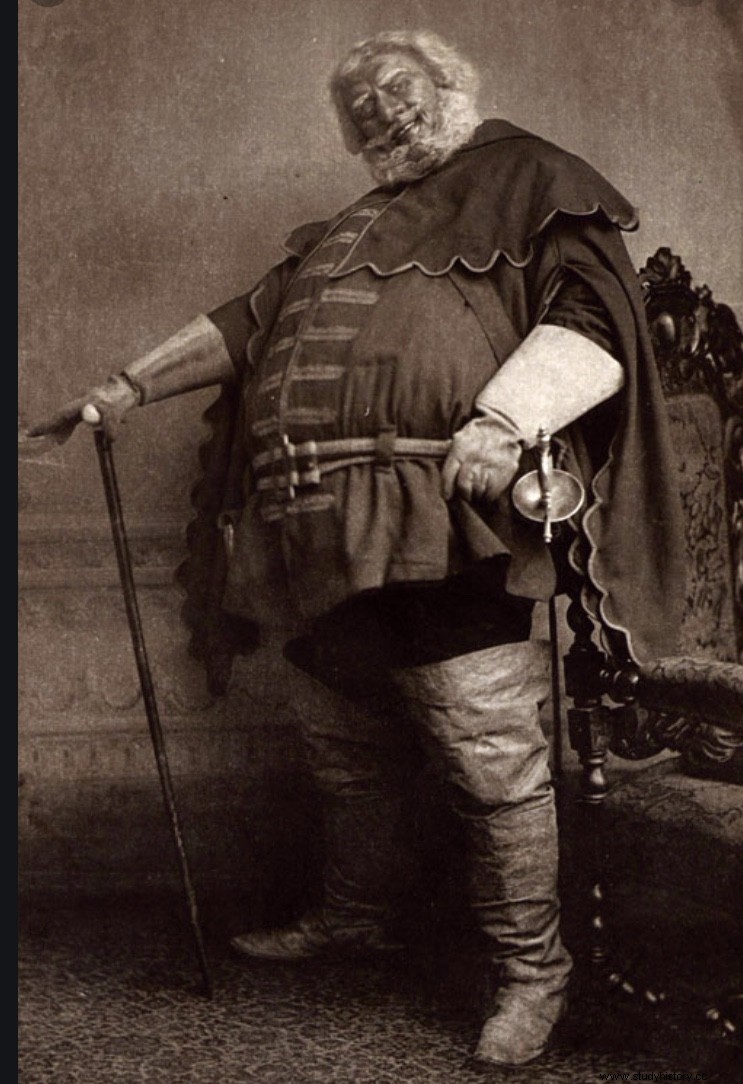
– John Falstaff :in the film John Falstaff is a friend of Henry's nocturnal wanderings while he is a prince. When he accedes to the throne he seems to have forgotten about Falstaff, but when he decides to start the war against France he asks him to accompany him and lead the English army. Among the mistrust of the nobles surrounding the king, Falstaff designs the strategy that gives them victory in the battle of Agincourt, but by placing himself in the center of the English who serve as bait for the French charge, he ends up leaving his life in the field. of battle.
In the film, the case of John Falstaff is the one that most closely follows the plot of Shakespeare's plays on Henry V. Sir John Falstaff is a character that emerged from the imagination of the English playwright , albeit based on two historical figures. The name appears to be taken from an English soldier named Sir John Falstof who fought in the Hundred Years' War. He did indeed fight at Agincourt, but he did not perish there, but continued to serve valiantly in the English army in other battles of the conflict. In the serious English defeat of Patay (1429) he was accused of cowardice, although he was later acquitted of this charge. He retired from service in 1440 and died in 1459.
The second character, on whose biography Shakespeare seemed to draw for the character of John Falstaff, was Sir John Oldcastle. Initially, the playwright's intention was to call his character that way. What happens is that when the play Enrique V was premiered His descendants were alive and powerful, so he was forced to change his character's name to John Falstaff.
Sir John Oldcastle was a friend of Henry V, but he belonged to the heretical movement of the Lollards, who preached against the privileges and riches of the Church and the need for her to be deprived of them . The Church eagerly persecuted those who practiced and spread it, and in September 1413 it was the turn of John Oldcastle, who was put on trial in St. Paul's Cathedral. He was sentenced and the king requested time before the execution of the sentence so that his friend could reflect and repent, so he was taken to the Tower of London.
However, he managed to escape and was hidden by some co-religionists. Meanwhile, Oldcastle planned a plot against the king, which included kidnapping him. During the last months of 1413 they toured the kingdom seeking support for their plan, but it is known that the more people know of a conspiracy the more difficult it is to keep it secret and inevitably leaks occurred, so that when in January 1414 the Lollards gathered to execute their plans, the royal forces were waiting for them. Those who could not flee, up to thirty-six conspirators, were tried and hanged. Oldcastle escaped but was captured in Wales in 1417 and executed.
Later, two operas, one by Verdi and one by Salieri, were based on the character of Falstaff.
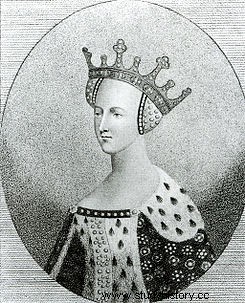
– Catherine de Valois :the union between Enrique V and the French princess, daughter of Carlos VI and sister of the Dauphin Carlos, has already been sufficiently explained. Her marriage was short-lived because Henry died in 1422, but there was enough time for Catherine to bear him a son, King Henry VI.
Once a widow, Catherine seemed destined to lead a quiet life and disappear from the pages of history. But her path was crossed by an affair that was destined to change the history of England. Her crush was a Welshman whose name was Owain ap Mareddud ap Tudur, although he was also known as Owen Fitz Meredith, Owen Meredith and Oweyn Tidr, until the English court scribes decided it was more comfortable to refer to him as Owen. Tudor.
If they did marry, as most authors claim, they did so in secret. In any case, in 1431 the couple's first son was born, whom they called Edmund. They had more children:Jasper, possibly another named Owen who was given to a convent, and a daughter (Margaret or Tacine) is believed to have died young and is unknown.
Edmund Tudor married one of the leading women (or rather girls, for he was thirteen) of the English nobility, Margaret Beaufort. Edmund died in 1456, but had time to impregnate his wife. This, only fourteen years old and of weak and thin constitution, had a difficult childbirth in 1457, but both she and her son survived. His son was named Henry Tudor and he became the first king of this dynasty (Henry VII) upon ascending the throne of England after defeating Richard III, the last Plantagenet, at the Battle of Bosworth.
As for Catherine of Valois, she died in the year 1437.
For more information on the topics discussed here you have at your disposal my book The Plantagenets and you can pre-order (it will be published in January) my next play, What Shakespeare Didn't Tell You About the Wars of the Roses.
Image| Wikimedia Commons, author archive, Britanica.com.
